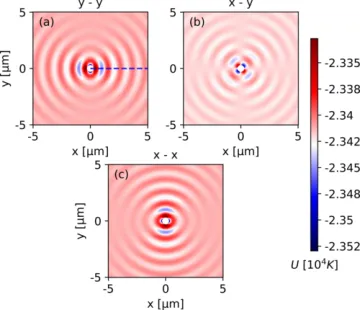Date Published: May 7, 2024
Clemens Jakubec, Research Technician at the Wyant College of Optical Sciences; along with co-authors Pablo Solano; Uroš Delić; and Kanu Sinha, Assistant Professor of Optical Sciences, have developed a generalized scattering theory to describe radiative forces between dielectric nanospheres influenced by external quantum fields in various states. Their work shows that an external squeezed vacuum state can generate optical potentials similar to those of a laser, despite having zero average intensity. Additionally, Schrödinger cat states can enhance or suppress these potentials depending on their parity. By examining the interparticle potential under different experimental conditions, they demonstrate the possibility of creating mutual bound states of nanospheres with significant potential depths. This research is crucial for advancing experiments with trapped nanospheres in the macroscopic quantum regime, offering new avenues for engineering interactions in macroscopic quantum systems.

The total potential as a function of relative optical phase Δ𝜙 at intensity 𝐼=10−2W/µm2, 𝑇=300K, and with both lasers polarized along the 𝑦 axis by sphere (a) 𝐴 and (b) 𝐵. The spheres have a radius of 𝑅=100 nm. The dashed colored lines coincide with the potentials plotted in Fig. 4. (c) Stability analysis along the 𝑥 axis of the two nanospheres. The dotted lines show the minima of the potential of sphere 𝐴 (teal) and sphere 𝐵 (orange) as presented in Fig. 6. The dashed lines correspond to the potentials in Fig. 4. Due to the nonconservative nature of the optical binding interaction, stable bound states along the 𝑥 axis can only be found at Δ𝜙=0 and Δ𝜙=𝜋 since only then both spheres can be at a potential minimum simultaneously.
Clemens Jakubec et al.
